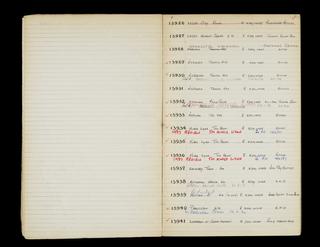
British Rail: Eastern Region
Railways in Britain were nationalised under the terms of the Transport Act 1947 which came into effect on 1 January 1948. The Railway Executive, a corporate body subordinate to the British Transport Commission, was created to manage and operate the railways. It divided them into six geographical regions, largely based on the areas served by the pre-nationalisation railway companies.
Between 1948 and 1952 the regional manager of the Eastern Region was responsible to the Railway Executive for day to day operations in his region. After the Railway Executive was abolished in 1952, he reported to the British Transport Commission (BTC). In 1963, BTC itself was abolished and replaced by British Railways Board (BRB). Between 1963 and 1968 the Eastern Region was a statutory board in accordance with the provisions of the Transport Act 1962, subordinate to and reporting to BRB.
In 1957 the Eastern Region was divided into three lines – Great Eastern, Great Northern and London, Tilbury, and Southend (transferred in to the Eastern Region in 1949) each under a Line Traffic Manager. The lines were managed as the Great Northern (Kings Cross services) and the Great Eastern (Liverpool Street and Fenchurch Street services), with the regional headquarters at 55 Liverpool Street. The Chief Regional Officer in 1948 was Charles K. Bird.
The Eastern region lines connected Liverpool Street in the City of London with destinations in east London and the east of England. The Northern lines include London King's Cross railway station to Stevenage in Hertfordshire and Peterborough in Cambridgeshire. Commuter services via the North London Line were also run into Broad Street station, but these were slowly run down and diverted to other destinations, with the station eventually being closed in 1986.
In 1967 the North Eastern Region was absorbed into the Eastern Region and the region's headquarters in York became the new headquarters .
By 1988 the Eastern Region had been divided again into the Eastern Region and the new Anglia Region, with the boundary points being between Peterborough and Whittlesea, and between Royston and Meldreth.
The Eastern Region continued the London North Eastern Railway’s electrification programme as part of the 1955 Modernisation Plan. However, the British Transport Commission felt that many Eastern Region routes would not benefit from this; indeed, many of the rural lines proposed for electrification were in fact closed entirely by Dr Beeching. Instead, the Eastern Region had to content itself with being an early adopter of diesel-electric power, replacing steam at the earliest opportunity
The region ceased to be an operating unit in its own right in the 1980s and was wound up at the end of 1992. This was caused by British Rail reorganising the regional structure being abolished and replaced with business-led sectors. This process, known as ‘sectorisation’, led to far greater customer focus, this was cut short in 1994 when privatisation caused British Rail to split up.








